
HOW TO USE YOUR TERRACE/OPEN SPACE TO INCREASE INCOME DURING LOCKDOWN: BY USING HORTICULTURE
CONVERT YOUR HOBBY OG GARDENING INTO SELF EMPLOYMENT AND EARN REGULAR INCOME

Importance of Horticulture and Divisions of Horticulture.
What is Horticulture?
JALANDHAR (VAIBHAV BANSAL BUREAU CHIEF): Horticulture is a branch of engineering consists of two parts, viz. Hortus meaning garden and Colere meaning to grow or to cultivate (Cultura meaning cultivation). The word horticulture – first conceived by Peter Lautenberg. In the English language the word horticulture -used for the first time in 1678 in a book entitled “New World of Words” by Phillips. Garden -a broad term. Garden – originated from the Latin term Gyrdan meaning “to enclose”. When fruits are grown in a definite area then that part is called an Orchard. Hence, horticulture is that branch of Agriculture that concerns garden crops.
• Horticulture can also be defined as the branch of agriculture concerned with intensively cultivated plants directly used by man for food, for medicinal purposes, or for aesthetic purposes.
Main distinguishing features of horticulture
• Horticulture crops are used in a living state while others like grains etc. are not used in a living state.
• Horticulture crops are comparatively more intensively cultivated than field crops.
• Horticulture crops have high water content and are highly perishable.
• Cultural operations like propagation, training, pruning, and harvesting are skilled and specific to horticultural crops.
• Horticultural produce is a rich source of vitamins and minerals and alkaloids.
DIVISIONS OF HORTICULTURE
• Production of edible fruit crops —Pomology Pomum = fruits, logy = science,
• Production of vegetable crops —Olericulture Oleris = pot herb
• Production of ornamental crops —Floriculture and Landscaping
• Preservation of horticulture produce for consumption —Fruit Technology
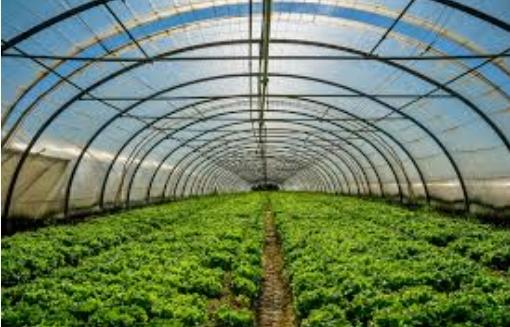
Pomology
• Pomology: is a branch of horticulture that deals with various aspects of fruits starting from the rising of saplings, growing them properly, and providing various intercultural operations, the term pomology is a combination of two Latin words pome-fruits and logos-culture. “Poma” in Greek means fruits later subsequently transfer in to „Pome” in Latin word means fruits, logos- study.
The term Pomology is derived from the Latin word ‘Pomum’ meaning ‘fruits’ and the Greek term ‘logy’ meaning Science. Thus, pomology is the science of the production of fruit crops. OR The science of growing fruit crops.
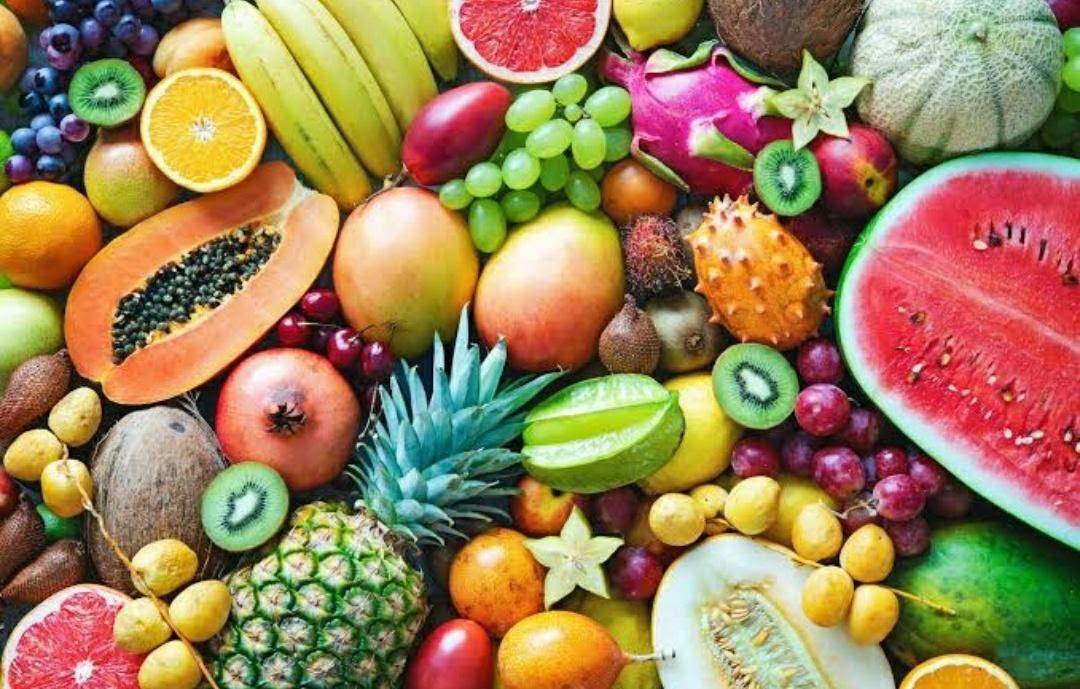
(a) Tree fruits: Fruits are produced on trees e.g. Mango, Chiku, Citrus, etc.
(b) Small fruits: Fruits are produced on shrubs or vines e.g. Phalsa, Raspberry, Mulberry, Grapes, Gooseberry, Strawberry
Role of a Pomologist:
They are responsible for cultivating new fruits and nuts, as well as maximizing the production of existing varieties. They also make sure that crops are more resistant to diseases and adverse weather and that they remain commercially viable.
Job Duties
As a pomologist, your job duties will typically include:
- Developing new fruit and nut cultivars
- Studying pruning practices, fertilization and other activities to ensure trees and crops remain healthy and productive
- Dealing with crop pests, infections, and diseases which could threaten the health of a crop
- Determining the best ways to harvest and transport fruit and nuts, eg: developing specialized crates
- Analyzing shelf life and storing conditions to ensure crops last as long as possible once harvested
- Cope with adverse weather to ensure the survival of crops across changing climate conditions
- Studying the growing conditions of various fruit and nut trees
- Watering, pruning, and transplanting crops, when necessary
Essential Skills & Qualities
First and foremost, you’ll need a love for outdoor gardening and an eagerness to learn about horticulture subjects like fruit tree propagation to become a pomologist.
You’ll also need:
1.Excellent research and laboratory skills
2.Strong analytical skills
3.An interest in fruit cultivation
4. critical thinking and problem-solving skills
5.Good outdoor/field skills
6. A good level of attention to detail
7.Good report-writing skills for creating research reports
8.Excellent speaking skills
Inquisitiveness and persistence
9.An up-to-date knowledge of the industry’s trends
Working Hours & Conditions
Pomologists usually work Monday to Friday, 9 am to 5 pm, but working hours and workloads can vary according to the season. Long hours and working on weekends is to be expected. Work is usually carried out in the field where you will work with actual trees. Outdoor work can be challenging as you will often have to perform your job in all sorts of weather, including in the freezing cold, rainstorms, and blistering heat. A hands-on approach is, therefore, critical. You will also work in an office or conduct theoretical research in a lab.
Salary
Salary information for pomologists is obscure but since this is a specialized profession, a generous salary is to be expected.
Olericulture
• Olericulture: refers to the cultivation of vegetables. The term Olericulture is originated from the Latin word ‘Oleris’ meaning pot herb and the English word culture meaning raising of plants. Thus, olericulture is the science of vegetable crops. OR The cultivation of vegetable crops. e.g. brinjal, tomato, potato, radish, carrot, chili, bottle gourd.
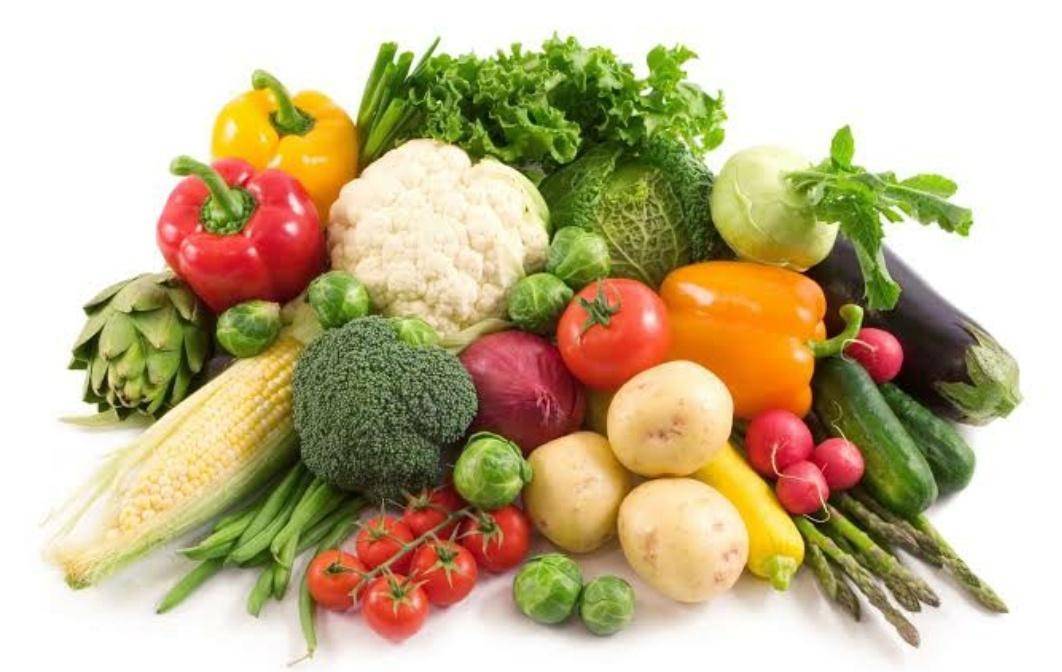
Vegetable crops can be classified into nine major categories:
1.Potherbs and greens – spinach and collards
2.Salad crops – lettuce, celery
3.Cole crops – cabbage and cauliflower
4.Root crops (tubers) – potatoes, beets, carrots, radishes
5.Bulb crops – onions, leeks
6.Legumes – beans, peas
7.Cucurbits – melons, squash, cucumber
8.Solanaceous crops – tomatoes, peppers potatoes
9.Sweet corn

Role of an Olericulturist:
1. Olericulturists deal with the production, storage, processing, and marketing of vegetables.
2. Olericulturists encompass crop establishment, including cultivar selection, seedbed preparation, and establishment of vegetable crops by seed and transplants.
3. Olericulturists also include maintenance and care of vegetable crops as well commercial and non-traditional vegetable crop production including organic gardening and organic farming; sustainable agriculture and horticulture; hydroponics; and biotechnology.
Job Duties
As a floriculturist, your job duties will typically include:
- Developing new vegetable cultivars
- Studying pruning practices, fertilization and other activities to ensure trees and crops remain healthy and productive
- Dealing with crop pests, infections, and diseases which could threaten the health of a crop
- Determining the best ways to harvest and transport vegetables eg: developing specialized crates
- Analyzing shelf life and storing conditions to ensure crops last as long as possible once harvested
- Cope with adverse weather to ensure survival of crops across changing climate conditions
- Studying the growing conditions of various vegetable plants.
- Watering, pruning, and transplanting crops, when necessary
Essential Skills & Qualities
- First and foremost, you’ll need a love for outdoor gardening and an eagerness to learn about horticulture subjects like olericulture with excellent research and laboratory skills, strong analytical skills, an interest in vegetable cultivation.
- Critical thinking and problem-solving skills , good outdoor/field skills , a good level of attention to detail ,good report-writing skills for creating research reports ,excellent speaking skills inquisitiveness and persistence.
-
An up-to-date knowledge of the industry’s trends
Floriculture And Landscaping
• Floriculture: is a branch of Horticulture which deals with commercial growing, marketing, and arranging flowers and ornamental plants, which includes annuals, biennials, and perennials viz., trees, shrubs, climbers, and herbaceous perennials. It is a science of cultivation of flowers and ornamental plants for commercial purposes or merely for getting pleasure and as a hobby.

Due to the increase in the domestic need for flowers, the career scope in the field of floriculture is also increasing. Nowadays, the demand for flowers like roses, gerbera, carnation, gladiolus, orchids, and lilies is increasing day by day.
What is the job of Floriculturists?
- Floriculturists are involved in the cultivation of plants that produce beautiful flowers.
- They focus on the farming of ornamental plants for gardens, floral industry, and export.
- In addition to this, they also produce plant breeding of new varieties.
- They also do other jobs like wild harvesting and production of commercial flowers, flower seed, foliage, and essential oil crop and production of plant products
1)Floral Designers
2)Interior Decorator
3) Production Managers
4)Management Analysts
5)Floral Wholesaler
6)Sales Representatives
7)Landscape Technician
Where Are Floriculturists required?
- The need of floriculturists is in nurseries, Botanical Gardens, farm companies, Genetic companies, Agricultural product companies. Aspirants may teach at the college and university level as a professor. Floriculturists teaching in the college may become the instructor, assistant professor, associate professor, and professor.
- They are also required in cosmetics and perfume manufacturing companies.
- Many companies and firms employ graduates of floriculture in various designations. Some outdoor design consultancy firms do work in horticulture landscaping and plantation which employ floriculturists and horticulturists in supervisory positions for the growth of gardens. You can also be employed by the city planners and builders for their construction sites.
- You can set up your own business in growing flowers for the export market, growing ornamental plants, running nurseries, or providing gardening and landscaping for advisory services. The cosmetics and perfume industry are other career options in which you might be hired as a floriculturist in the perfume industry.
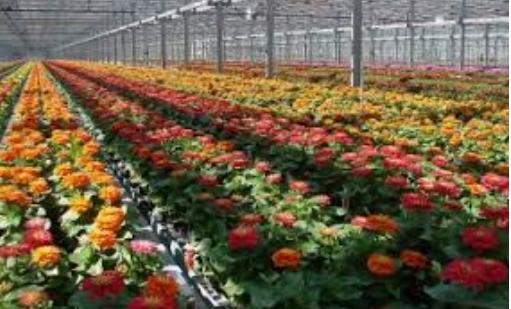
Landscape gardening:
• Landscaping is the design and alternation of a portion of land by use of planting material and land reconstructions. It is a science of designing and laying out home gardens, public gardens, parks, roadside plantations, avenues, etc.
Role of landscaper:
Activities that modifies the visible features of an area of land, including:
- Living elements, such as flora or fauna; or what is commonly called gardening, the art and craft of growing plants with a goal of creating a beauty within the landscape.
- Natural elements such as landforms, terrain shape and elevation, or bodies of water; and
- Abstract elements such as the weather and lighting conditions.
Importance of landscape:
| Economic | Social/Cultural | Ecological |
| 1.Tourism
2.Branding 3.Attracting Investment 4.Attracting Residents 5.Productive Capacity |
1.Quality of Life
2.Spiritual Renewal 3.Sense of Place and Identity 4.Cultural Values 5.Historical Linkages |
1.Indigenous
2.Regeneration 3. Conservation 4.Habitats
|
Subdivisions under Landscaping includes
1.Landscape design
2.Landscape ecology
3 Landscape engineering
4.Landscape planning
5.Landscape archaeology
6.Naturescaping
7.Sustainable landscaping
8.Terraforming
9.Xeriscaping

Post-Harvest Technology
• It deals with post-harvest handling, grading, packaging, storage, processing, value addition, marketing, etc. of horticulture crops.
It is a science of the canning of fruits and vegetables. e.g. fruit juice, jam, marmalade, candy, dehydration, etc. product groups like confectionery, chocolates and cocoa products, soya-based products, mineral water, high protein foods, etc.
After harvest, foods (e.g. fruits, vegetables, milk, meat, fish,) are liable to accelerate physiological, chemical, and microbial processes that invariably lead to deterioration and loss of wholesomeness.
In the absence of such processing, massive post-harvest losses can ensue. HISTORY
• History of fruit cultivation is as old as civilization.
• Fruits have their references in Vedas, Purans, Upnishads, etc.
• Oldest fruit is said to be Date palm as its reference dates back to 7000 B.C., next is Pomegranate (3500 B.C), Grapes (2440 B.C), Mangoes, Banana and Coconut (2000 B.C), Peach and Almond (1300 B.C), Olive(100 B.C).
• First book exclusively on litchi cultivation was published in China in 1056 A.D.
• In India, commercial horticulture -recent origin (100 years old).
• Orchards in olden days – planted just for a hobby by the kings
• Akbar planted >1 lakh plants of fruit trees -at Dharbanga (in Bihar) –named as Lakhbagh – referred in a book called Ain –e –Akbari.
Mughals -established Mughal gardens.
• In H. P. Major Bannon and Captain Lee – first to plant the apple orchard in Kullu valley.
• Sir Alexander Coutts – an apple orchard at Mashobra.
• S.N.Stokes – apple growing in Kotgarh
Origins of Horticultural Science
• The origin of horticultural science derives from a coming together of three events:
-the formation of scientific societies in the 17th century,
– the creation of agricultural and horticultural societies in the 18th century, and
– the establishment of state-supported agricultural research in the 19th century in different countries.
• In England Two seminal horticultural societies involved:
-The Horticultural Society of London (later the Royal Horticulture Society) founded in 1804 and
-The Society for Horticultural Science (later the American Society for Horticultural Science) founded in 1903.
IMPORTANCE OF HORTICULTURE
• Diet
• Entertainment
• Medicinal purposes
• Environment
• Aesthetic value
• Economic value

Importance of fruits in the human diet
• From a human nutrition point of view, horticulture is most important to our daily living. Many of the horticulture crops and their products find a place in our meals and diet.
• Human body requires vitamins, minerals, proteins, energy, etc. for its health. All these are supplied by horticultural crops. Fruits and vegetables are the chief sources of vitamins, minerals, carbohydrates, fats, proteins, etc. are recognized as protective foods as they are necessary for the maintenance of human health.
• A person should consume at least 120 g of fruits per day as per the Indian Council of Medical Research, but the consumption of fruits per capta in India is still low. However, the availability of fruit is 172 g per day in our country. In countries like Italy, France, and the USA, the consumption is 308, 232, and 223 g / day respectively.
• Deficiency of any minerals and nutrients is depicted by the human body by giving typical symptoms. The great majority of people obtain most of their carbohydrates and proteins from cereals and pulses but their diets must also contain a significant amount of fruits to ensure that they get the vitamins that are not provided by the staple cereal foods.
Vitamins
• These are the important constituents of fruits and vegetables and are an indispensable part of the human diet.
• Although required in very minute quantities, they are absolutely essential for the maintenance of health.
• The deficiency of any vitamin from the diet for a considerable period may lead to diseased state or disorder conditions.
• Fruits and vegetables supply several vitamins.
Vitamin-A
• It is essential for normal growth, reproduction, and maintenance of health and vigor.
• It affords protection against cold and influenza and prevents night blindness.
• Its deficiency results in– cessation of growth in young children, night blindness, drying up of tear glands in the eyes, the eruption of skin (Rashes on the skin), and brittleness
of the teeth
• Sources: Mango, Papaya, Dates, Jackfruit, Walnut, etc.
Vitamin B1 (Thiamine)
• Tones the nervous system and helps in the proper functioning of the digestive tract.
• Its deficiency in the human diet results in – Beri-beri, paralysis, loss of sensitivity of the skin, enlargement of heart, loss of appetite, loss of weight, and fall in body temperature.
• Sources: Orange, pineapple, jack fruit, cashew nut, walnut, dry apricot, almond, banana, etc,.
Vitamin B2 (Riboflavin):
• Required for body growth and health of the skin.
• Its deficiency causes – sore throat, anorexia cataract, and loss of appetite and body weight, and also the development of swollen nose.
• Sources: Bael, papaya, litchi, banana, apricot, pomegranate, pear, etc.
Vitamin B6 (Pyridoxin)
• Its deficiency causes – dermatitis, anemia, ulceration in the oral cavity, etc.
• Rich fruits are chestnut, walnut, almond, apricot, apple, plum, etc.
Niacin
• Its absence causes – sour tongue, Pellagra (a complex of diarrhea, loss of mental aptitude, and dermatitis), discoloration of the skin of hands, feet, and legs, and under severe conditions the mental balance may shift.
• Rich fruits are chestnut, walnut, almond, apricot, apple, plum, etc.
Vitamin -C (Ascorbic Acid):
• This vitamin promotes general health and healthy gums,
• Prevents scurvy disease which is characterized by pain in the joints and swelling of limbs (rheumatism), bleeding of gums, tooth decay and keeps the blood vessels in good condition.
• Sources: Amla, guava, ber, citrus, strawberry, pineapple, etc. Constituent Sources Established or proposed effects on human wellness
Vitamin K Nuts synthesis of procoagulant factors, osteoporosis
Vitamin E (tocopherols)
Almonds, cashew nuts, filberts, macadamias, pecans, pistachios, and walnuts heart-disease, LDL oxidation, immune-system, diabetes, cancer Fiber most fresh fruits and vegetables, nuts, cooked dry beans, and peas diabetes, heart disease
Folate(folacin or folic acid)
dark-green leafy vegetables (such as spinach, mustard greens, butterhead lettuce, broccoli, brussels sprouts, and okra), legumes (cooked dry beans, lentils, chickpeas, and green peas), birth defects, cancer heart disease, nervous system Calcium Papaya, raisins, orange, almonds osteoporosis, muscular/ skeletal, teeth, blood pressure
Magnesium Banana, nuts, cashews osteoporosis, nervous system, teeth, immune
system
Potassium Dried fruits (such as apricots and prunes) hypertension (blood pressure) stroke arteriosclerosis
Economic Importance
i) Increased production possible in comparison to other Agronomical crops because trees have a longer life and their production increases with advancement in age provided proper care is taken. Similarly, vegetables can also be grown 3 to 4 times each year giving the products all the time they are grown. More number of crops can be grown from the same piece of land.
ii) More profitable since the average income per unit area is more in horticulture crops than agriculture crops e.g.
Fruits Income( in Rs) / year / hectare
Grape 62000- 63000
Papaya- fruit 20000
Papain 40000- 50000
Aonla 20000
iii) With the support of horticulture, many agro-industries can spring up in villages themselves. It is an accepted fact that horticulture can come in a big way to solve the problem of unemployment. Source of other industries e.g. rubber, oil, gum, dyes, chemicals, etc. raw material for fruit and vegetable processing plants, hence becomes a solution to reduce unemployment.
iv) Employment is also generated in doing field operations like fruit picking/harvesting, grading, packing, selling, etc. In cereals, labor engagement is of 143 days and in fruits it is of 850 days (in intensively grown fruits like grapes, banana, and pineapple it is 1000 to 2500 man-days).
• Dependence on cereals can be decreased since fruits and vegetables provide almost every nutrient and mineral required for the human body as food.
• Foreign exchange can be earned by exporting the fruits and vegetables and their quality products e.g. mango, almond, saffron, etc. (export of fruit is > 52% of total agriculture production). Products like jams, jelly, pickles, etc. are exported, and similarly making them indigenously thus saving the foreign exchange minimizes the import of wines and other horticulture-based products.
Areas related to horticulture for providing employment
• Fruit cultivation
• Vegetable cultivation
• Plantation and spice crop cultivation
• Vegetable F1 seed production
• Vegetable and flower seed production for export
• Cut flower production and floriculture
• Landscaping
• Nursery raising
• Tissue culture
• Marketing
• Processing of horticulture produce
• Government development departments
• Ancillary services (fertilizers, tools, insecticides –pesticides, irrigation equipments, chemicals like growth regulators, etc. –manufacture, sale essence, and consultancy services)
• Research and education
Entertainment
Roaming in the gardens, orchards or places well planted with flowerbeds, etc. gives mental peace to the persons. One enjoys fresh air and natural beauty, sheds of tension making him fresh.
Medicines
• The parts like stem, leaf, flowers, roots, and even the fruits of horticulture plants are used to make drugs, chemicals, insecticides, germicides, etc. e.g. rose water is used to cure eye ailments. Similarly saffron is an important ingredient of many medicines.
• Papain is a digestive enzyme, citrus fruit like sweet lime is used for a liver ailment, rind of pomegranate and pectin from guava used for stomach upset, the bark of Arjun trees for heart troubles, neem water for skin irritation and allergies, etc.
Aesthetic value and religious importance
• Aesthetic value and religious importance is the unique factor distinguishing it from agricultural activities.
• Mango leaves, wood, banana leaves, etc. are used for religious functions.
• Similarly the plantation of banana trees in the courtyard or tulsi plantation is said to bring prosperity as per Hindu religion.
• This aspect of horticulture has lead to its universal popularity.
• Paradise means garden. The hanging garden of Babylon (one of the 7th wonders of the world) and the Versailles garden of the 17th century are unique
examples.
SCOPE OF HORTICULTURE
• The importance of horticulture in improving the productivity of land, generating employment, improving economic conditions of the farmers and entrepreneurs, enhancing exports, and, above all, providing nutritional security to the people, is now widely acknowledged.
• Presently, the horticulture sector contributes around 31 % of the GDP and 38% of the total exports of agricultural commodities from around 14% of the area.
India is the 2 nd largest producer in the world, with 81.28 million tones of
fruits occupying an area of 6.98 million hectare
The area under fruits in the state is 2,20706 ha with a production of 8,66,344 MT.
Himachal is a predominately horticultural state which is bestowed with unique potentialities of growing temperate and sub-tropical fruits.
The economy of the farmers depends upon the cultivation of fruits and vegetables.
Roles of Food Scientist:
It is the responsibility of the food scientist or technologist to understand the underlying processes contributing to food deterioration and spoilage and, to devise appropriate measures and methods of preservation in order to ensure availability, acceptability, and safety of food.
- Post-harvest loss reduction technology encompasses the usage of optimum harvest factors, reduction of losses in handling, packaging, transportation, and storage with modern infrastructure machinery, processing into a wide variety of products, home-scale preservation with low-cost technology.
- Use of thermal processing, low temperature, drying, chemical and biological reactions coupled with other preservation techniques are applied to enhance the storability.
- Containers and packaging materials confer portability as well as extend the shelf-life. Adoption of these techniques could make available a large quantity of food by avoiding losses and provide better quality food and nutrition, more raw materials for processing, thus ensuring better returns to the farmers.
Sector-wise food processing:
1. Fruits and vegetables processing
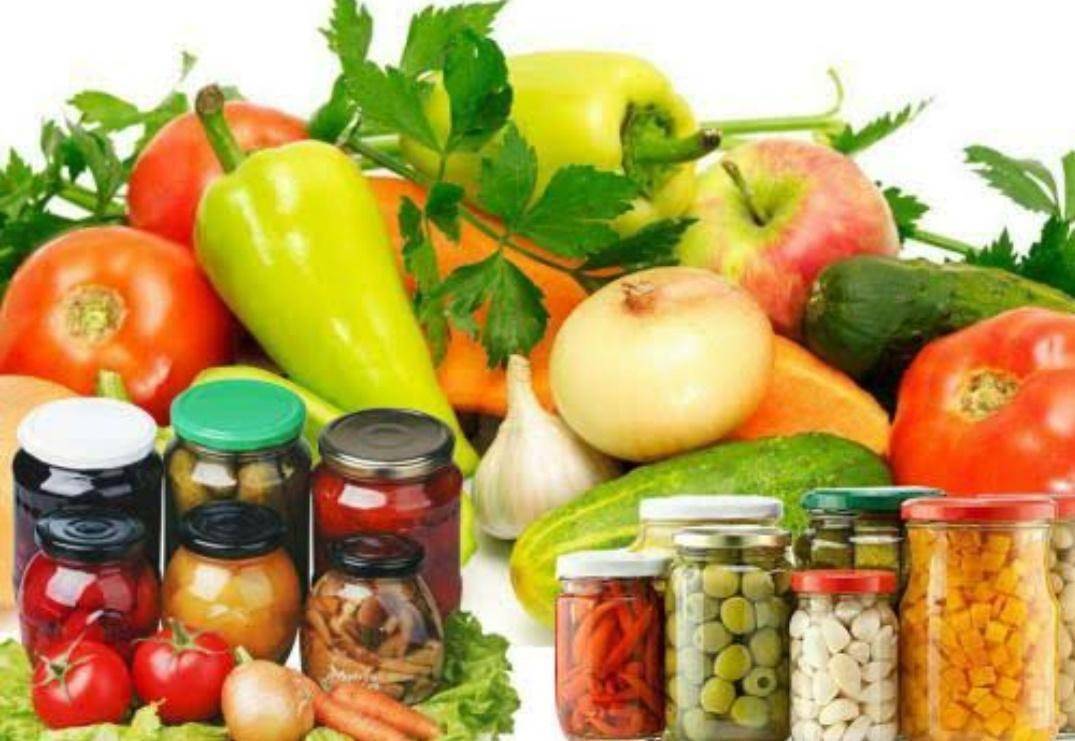
2.Processing of commercial crops
- Sugarcane, tea and coffee are major commercial crops grown in India.
- Tea emerged as major foreign exchange earner. India is the largest producer and exporter of black tea. India exports between 150 -170 million kilograms of tea per annum.
3.Packed and convenience food
Modern packed and convenience foods such as bread, biscuit, confectionery, chocolates, ready to eat foods like noodles, cereal flakes, etc have become popular in recent years especially in urban areas although traditional foods have been used in the country in the form of roasted, puffed, sweet meat and baked products.
- The extruded foods are largely produced in the unorganized sector.
- The traditional ethnic ready-to-eat foods prepared in hygienic conditions and marketed with better packaging has plenty of domestic and exports market presently, has good scope.
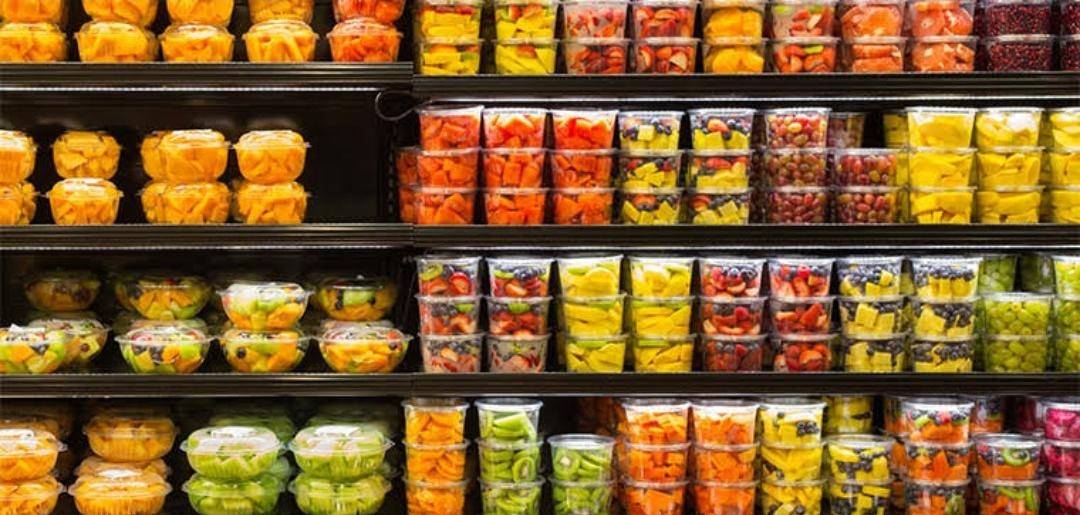
4. Soft drinks
The aerated soft drinks industry in India comprises over 100 plants across all states. Soft drinks constitute the 3rd largest packaged foods regularly consumed after packed tea and packed biscuits.
- Processing can always fetch an additional income to the growers and help in stabilizing the prices with economic returns.
- The best overall indicator of the economic contribution of food processing to the food system is value addition.
- It represents the firm’s contribution to an industry’s value addition and the value addition is the indicator of the industry’s contribution to GDP
- Processing units are a boon for the welfare of the orchardists as they can save their crop from wastage and at the same time their product becomes a more valuable, price fetching commodity with suitable post-harvest treatment packaging and by processing into various products.
5. Silviculture:
Cultivation and management of forest trees e.g. teak wood, neem, ficus, eucalyptus, etc.
Roles of Silviculturist:
- Control of crop composition and production of species of more economic value.
- Control of stand density for Production of maximum volume.
- Afforestation of blank under stock areas.
- Production of Quality Timber.
- Control of Rotation period.
- Facilitate management and use of forests.
- Creation of man-made forests and Introduction of exotics.
- Protection of site and intangible returns.

6.Plantation crops:
Cultivation of tea, coffee, coconut, areca nut, popular, eucalyptus, rubber, oil palm, etc.
Scope of plantation crops:
1)Expansion in non-traditional areas
2)Export potential: Plantation crops earn foreign exchange. Eg. Coir-based products, Coir export, and Coffee.
3)Employment generation: Cultivation of plantation crops provide year-round gainful employment on the farm and factories. Eg. Coconut provides for 78 man-days/ha/yr. Amounting to 70 million man-days/year. in Kerala alone.
4)Crop diversification: These crops provide ample scope for diversification and thereby it creates sustainable agriculture.
5)Availability of technology and yield gap: Considerable information on recent technologies is available on these crops. Eg. CPCRI Kasargod, Kerala. NRC on Cashew, Shantigod, Puttur (D.K). and Various Agril. Universities, Res. Stations etc.
7.Spices and condiments:
Cultivation of crops which products are used as an adjunct in food for flavor, aroma, and taste. e.g cardamom, clove, nutmeg, coriander, cumin, etc.
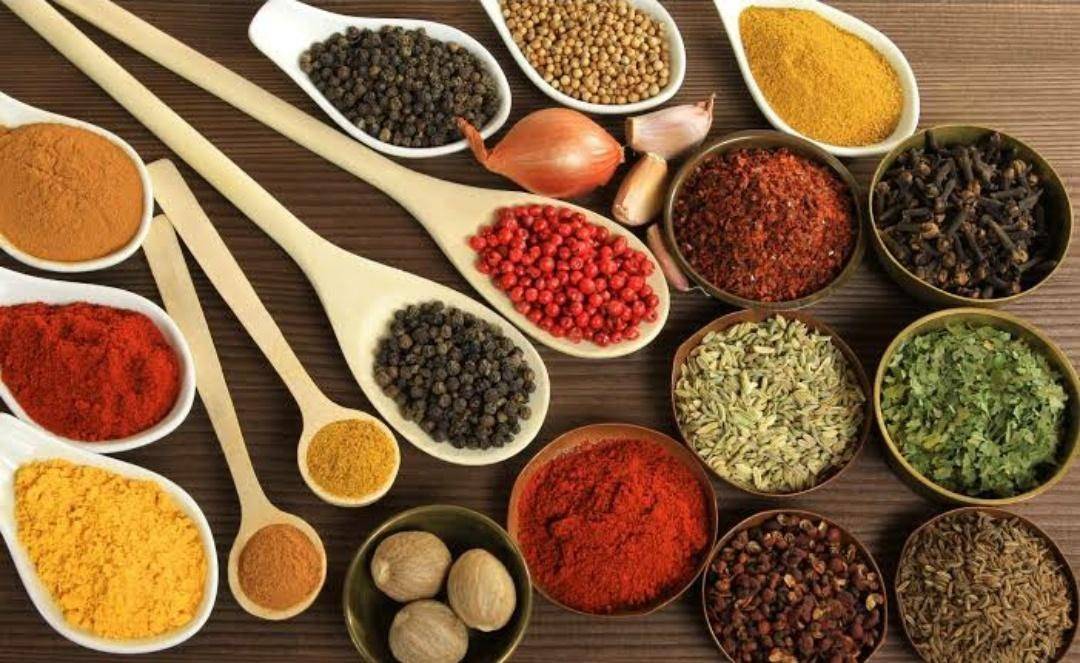
It is low volume, high value crop
8.Aromatic and medicinal plants:
Cultivation of aromatic and medicinal plants like gugal, aonla, beheda, harde, lucorice, lemon grass etc.
For human life:
The magical compound of medicinal and aromatic plants keeps saving humans until presents, such as medicine, food, healing, and recreation.
- One of the huge benefits of medicinal and aromatic plants was to overcome many difficult illnesses, such as contagious disease, cancer, and AIDS/HIV.
- The National Cancer Institute (NCI) screens plants for the possibility of new drugs and active plant chemicals for cancer and AIDS/HIV in several ongoing collaborative programs.
9. Sericulture:
Deals with the rearing of silkworm and production of silk.
Sericulture means silk farming. The word ‘Sericulture’ is derived from the Greek word ‘Sericos’ meaning ‘Silk’ and the English word ‘Culture’ meaning ‘Rearing’.
- Sericulture plays a significant role in the rural economy of India, is not bound to just worms, but includes all activities related to the silk culture like mulberry cultivation and even post-cocoon technology.
Jobs in Sericulture:
1. Sericulture offers career opportunities in Govt. research centers, silk boards, academic fields, sericulture units, agriculture sector banks, etc.
2.One can get jobs in Central Government agencies like Central Silk Board/Silk Export Promotion Council/Fao/Nabard, Krishi Vigyan Kendra, etc.
3.Candidates with M.Sc sericulture can apply for the post of lecturer, professor, and lab assistant. Sericulturists can find employment as officers, managers in the agricultural loan sector of nationalized as well as private banks.
4.Consultants with in-depth and updated knowledge of the field are also in demand, especially to provide guidance for the setting up of sericulture farms.
10. Additional
1..Apiculture: Beekeeping rearing for honey production.
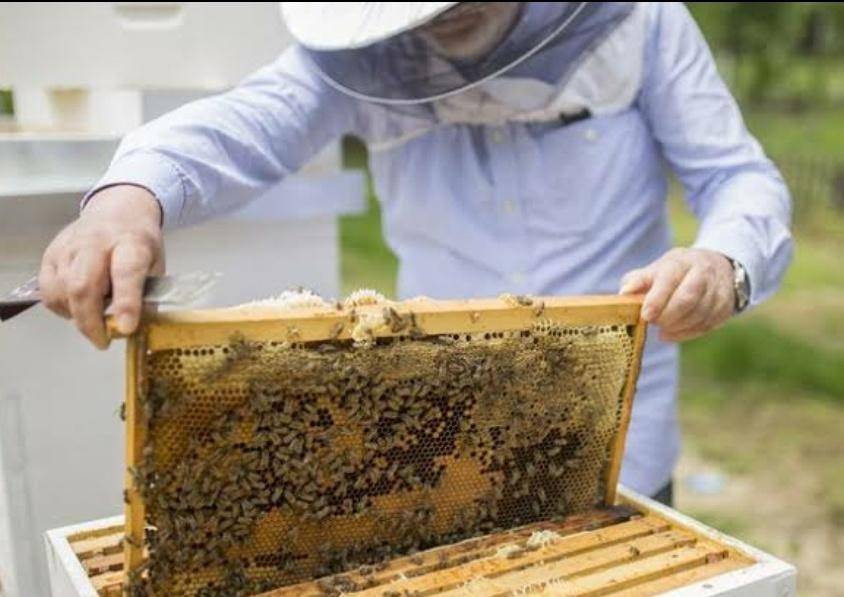
Top Benefits of Beekeeping:
- Save money on local honey.
- Boost your vegetable garden’s production.
- Save money on beeswax
- Bee Pollen and Propolis are natural remedies
- Sheer enjoyment and entertainment(Waggle Dance).
2.Mushroom production: Production of different edible species of mushroom-like Agaricus bisporus (button), Pleurotus sp. (oyster), Calocybe indica (Milky), Volvariella volvacea (paddy straw).
Importance of Mushroom Production:
1.Nutritional value: Protein content, 3-7% when fresh and 25- 40% when dry. Contain all essential amino acids, amides, and lysine.
2.Medicinal value: Consumption of mushrooms slows down the spread and effect of cancer, heart disease, HIV/AIDS (by boosting the immune system).
3.Income generation
4.Employment creation.
In our country
• Per capita per day consumption of fruits in our country is the lowest (120 g) in comparison to developed countries (250 –400 g) and even the developing countries (100 –200 g) like the Philippines, Pakistan, etc.
• Requirement of fruit is sure to increase with the growing urbanization and awareness regarding the need for fruits in the day to day diet.
• Fruit cultivation is a labor-intensive industry and is well suited for overpopulated nations like India and China. Fruit production involves specialized skills like production, harvesting, marketing, canning, processing, and many other connected trades; hence, it can accommodate huge manpower.
• Horticulture has the highest potential for export. The International trading in fruits increased by 20% annually.
With the production of quality fruits and implementation of improved technologies, the export of fruits can be increased manifolds and many more countries will become the importers of Indian fruits.
LIMITATION / PROBLEMS OF FRUIT PRODUCTION
1. High initial investment:-
a) The initial investment in the new orchard is very high e. g. cost of land, layout, digging of the pit, cost of plants and planting, cost of fertilizers, F.Y.M, insecticides, pesticides, etc.
b) In plants requiring a special system of pruning and training e. g. in Kiwi, Grapes, etc. the initial cost further increases because of investment in erecting special training structures.
Therefore, every person cannot afford to take up fruit production as an enterprise.
2. Non-availability of quality planting material:-
Adequate availability of quality plants is essential for orchard establishment.
Lack of knowledge in procuring quality plants can result in disastrous results. No proper legislation is enforced to curb the sale of inferior plants through footpath sellers or by private nurseries resulting in the dissemination of the inferior plants to growers in most cases.
Citrus plants are very often infected with citrus canker, leaf minor, similarly mango plants with malformation, peach with leaf curl and nematodes, etc.
3. Long juvenile period:- Most of the fruit crops have a long juvenile period and thus bear their first crop after a good many years e.g. stone fruits take
4 to 5 years, pecan nuts 10 to 12 years, etc. Orchardist, hence, has to bear the cost
of maintaining the plants through some other sources for a such number of years. Though the practice of planting fillers is being adopted for substantiating the income till the main crop comes into bearing.
4. Perishable nature:-
Horticulture plants have high water content, hence, are of perishable nature.
The technologies for increasing the shelf life are lacking and moreover, the facilities for providing the cold store are quite scarce in number.
This causes the over flooding of the fruits in the market during the peak-harvesting season, resulting in the crash in the prices of the commodity.
5. Lack of processing unit:- Very limited scale processing industries are available in our country.
The fruits growing in abundance e.g. mango, banana, citrus, pineapple, etc. could otherwise give higher returns if processed in different products and exported.
6. Lack of proper storage and transportation facilities:-
This results in the loss of 15% in most of the fruit crops. Our country still lacks the fleet of refrigerated railway carriages, which is the most suitable and smooth way of transportation of fruits.
7. Faulty marketing system:-
Most of the profits (up to 65%) are taken away by middlemen the Fruit Mandis where the grower is basically compelled to sell the fruit. From the grower, the fruit passes through the hands of the big contractor to a small contractor, commission agent, wholesaler, retailer before reaching the consumer. Thus the grower gets a margin of the profits only.
8. Low purchasing power:-
Irrespective of the low pricing of the fruit during the glut, it still remains out of reach of the common man who constitutes most of our country’s population.
Export of fruits and fruit products
Apple Bangladesh, Sri Lanka, Saudi Arabia
Banana Nepal, Netherlands, Qatar, Russia, Saudi Arabia, Bahrain
Grapes Bangladesh, Saudi Arabia, Bahrain, U.A.E, Kuwait, Oman, European
countries
Guava and Litchi Netherlands, Russia, Saudi Arabia, U.A.E, Lebanon, Yemen, Canada
Mango–dried slices U.K, Hong Kong, Bangladesh, Kuwait, Canada
Mango – puree and paste Saudi Arabia, Russia, Netherlands, and Nigeria
Mango –juice U.K, Russia, Yemen, Ethiopia, U.S.A, U.A.E
Mango –slices in brine U.K, U.S.A, Iraq, and Russia
Mango –squash U.S.A and Canada
Pineapple Nepal, Saudi Arabia, U.A.E, Kuwait, and European countries


